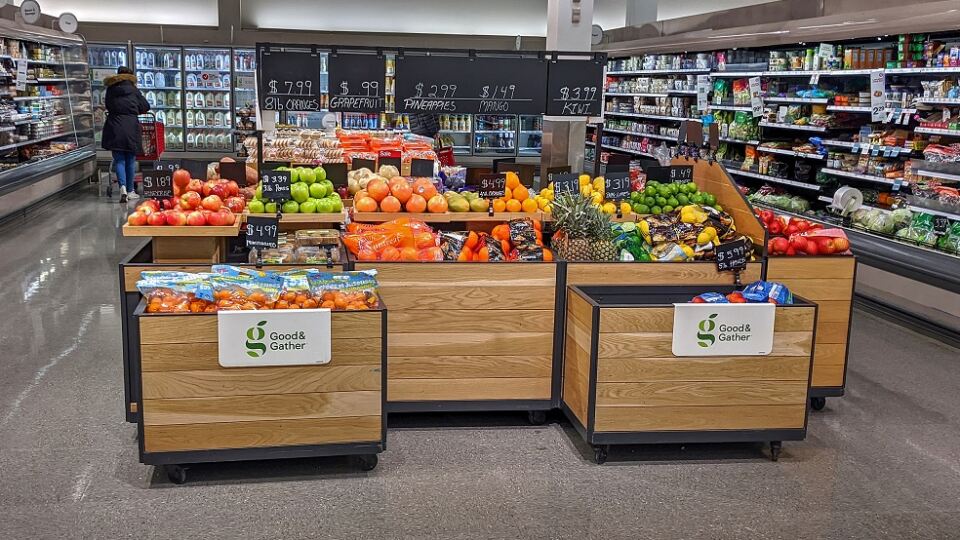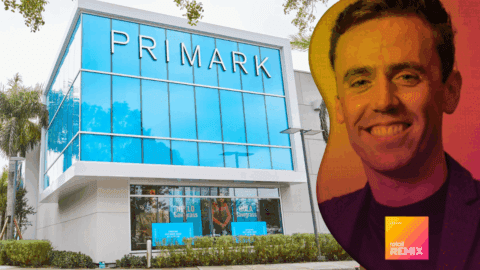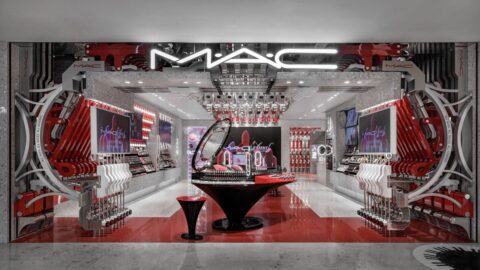Target was a model of agility during the pandemic, quickly expanding BOPIS and curbside pickup operations, and leveraging its store network for online fulfillment. The retailer was rewarded with double-digit sales growth in 2020 and again in 2021. At the Retail Innovation Conference & Expo held May 10-12 in Chicago, Rick Gomez, EVP and Chief Food & Beverage Officer at Target, revealed the critical role grocery played in this success story, as well as how the retailer plans to make it even more central to its guests’ shopping experience.
“Target grocery benefited from the pandemic, gaining $3 billion in market share and building trust with our guests,” said Gomez in the session titled Bringing Tar-Zhay to Target’s Food and Beverage Business, moderated by Liza Amlani, Principal and Founder of Retail Strategy Group. Customers realized “that they could count on us for essentials in food and beverage and could get them in a safe environment,” he added.
So it was somewhat dismaying when, about a year ago, Target found that its customers (who the retailer terms “guests”) were still unsure whether Target really loved the grocery category. “Coming off this growth, it was hard to hear guests say grocery felt like a bolt-on,” said Gomez. “We decided we were going to use this as a motivator, to turn ourselves into not just a retailer that sells food but a retailer that celebrates food.”
Making grocery a priority plays to a key Target strength, he added: “Where Target shows up really well is with seasons and holidays, because we can be a one-stop shop,” said Gomez. “For Easter you can get eggs, Easter candy, a basket, home décor items and your daughter’s Easter dress. We can do more of that with micro-holidays, for things like March Madness or people throwing Kentucky Derby parties.”
Target has taken a three-pronged approach to building up its grocery business:
- Creating the Target Circle loyalty program, which already has 100 million members, to learn more about its guests’ buying patterns and preferences;
- Elevating its assortment, including investments in private label brands, such as Good & Gather and Favorite Day, to drive differentiation and provide a specific reason for guests to visit stores; and
- Using its in-house media agency Roundel to leverage first-party data and partner with vendors to serve up messaging, promotions and advertising designed to meet specific guest segments Target is targeting.
Loyalty Program Yields Rich Customer Data
“We launched the Target Circle loyalty program, but it wasn’t to drive more sales,” said Gomez. “We wanted to build a better relationship with our guests, and to do that we needed to know more about them. Now, with 100 million participants, it’s one of the largest and fastest-growing loyalty programs in the U.S.”
Target Circle is critical to delivering personalization at scale, Gomez noted, including customizing messaging, promotions and services to meet individuals’ needs. Target’s approach needs to be attuned to people’s different life stages, whether the guest is a college student, a new mom or someone moving into their first home.
Additionally, “on a micro level, we’re constantly listening to our guests, and what we heard is that they are looking for easy, simple meal solutions,” said Gomez. Target responded with grab-and-go bags containing five or six items with quick recipes for things like beef sliders.
Curating Assortments to Increase Diversity
In addition to emphasizing its private label brands, Target also has been focusing on “smaller, emerging brands that we curate so our guests can discover them — guests love to come to Target and discover new brands,” said Gomez. He added that many of these newer brands are BIPOC owned. The retailer has committed to spending $2 billion with Black-owned brands (across multiple categories) by 2025.
“It wasn’t just because of George Floyd’s murder in our hometown [Minneapolis], but that was a catalyst,” said Gomez. “We looked ourselves in the mirror and asked, how can we help BIPOC businesses and communities? As a retailer, what we can do is help nurture, develop and bring up Black entrepreneurs so they can scale their businesses and potentially get on Target’s shelves.” Gomez reported that the retailer will have quadrupled the number of Black-owned brands it sells by the end of 2022.
Asked by Amlani what other retailers can do to diversify their assortments, Gomez warned that “it’s not going to happen organically; you have to proactively go out and seek these smaller brands. Many times they don’t have access to the capital, resources or mentorship of other brands. We offer consulting services and access to marketing and merchandising advice to nurture and help them. We hope they’ll be successful and eventually be on our shelves, or on those of another retailer.
“We’re playing the long game by co-creating with them,” Gomez added. “Helping them succeed and driving systemic change is an investment in the future.”
Leveraging Target’s Retail Media Network
Like many other retailers, Target has recently been emphasizing the capabilities of its Roundel in-house media network. “We’ve recently been more aggressive at growing this business, which allows us to leverage first-party data and partner with our vendors to serve up messaging, promotions and advertising to meet the specific guest segment we’re going after,” said Gomez. He added that these offers are structured in a “brand-safe” way, meaning Target doesn’t allow other brands to, for example, “buy” search results that would direct consumers to its items.
To learn more about retail media, check out our full guide here.
Most of all, Target’s food and beverage offerings are marked by innovation. “That goes back to being guest-centric,” said Gomez. “It involves a lot of work tracking food trends in the U.S. and globally. Our guests like to try new things and so we’re leaning into health and wellness trends, and they’re looking to Target to help them.” For example, Target’s dairy business is 50% milk, 50% specialty, with the latter encompassing the variety of soy, oat and other non-animal dairy products. “For us, specialty is mainstream,” said Gomez.
Gomez sees a “lot of runway” for food and beverage’s role at Target to increase, especially as more guests become aware of its offerings. “We offer industry-leading same-day services that allow people to drive up and have their orders placed in their trunks within two minutes, in a contactless, safe manner, but only one-third of our ‘super’ customers have tried drive-up, so there’s lots of growth potential,” he noted. It’s a similar situation with private label awareness, which is currently at only 35% for the Good & Gather brand.
Questioned by Amlani about how Target would continue building awareness of its grocery offerings, Gomez said “We’re asking ourselves what it means to be omnichannel. People don’t shop ‘digital’ or ‘brick-and-mortar’ — they just shop. We’re trying to do a better job of thinking about the journey and ensuring it’s connected, so that the point of purchase is as close as possible to the point of inspiration — that you can just click when you see the recipe to get those ingredients.”















